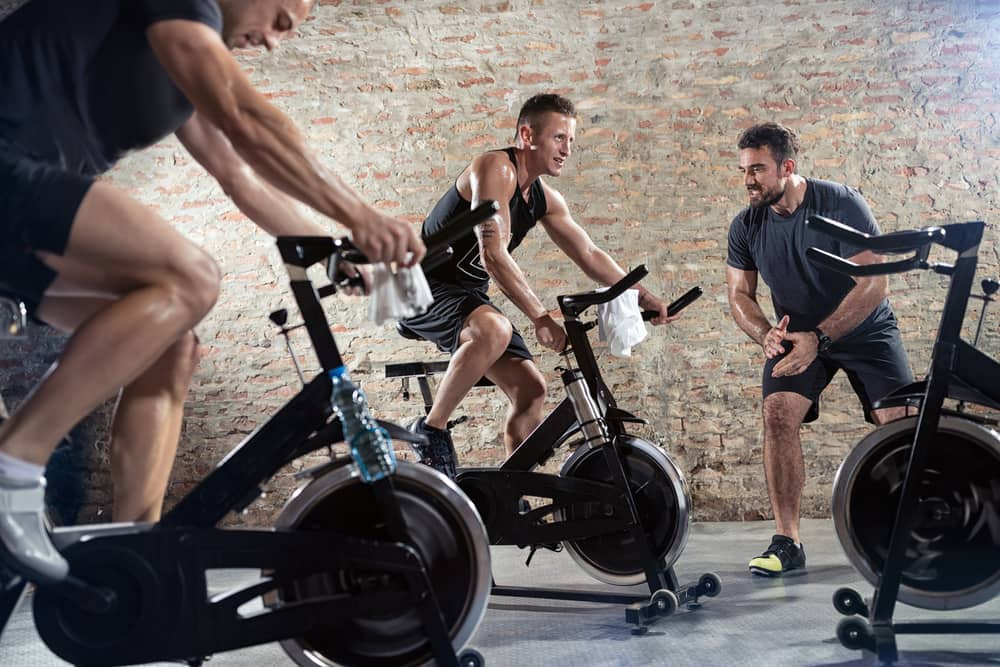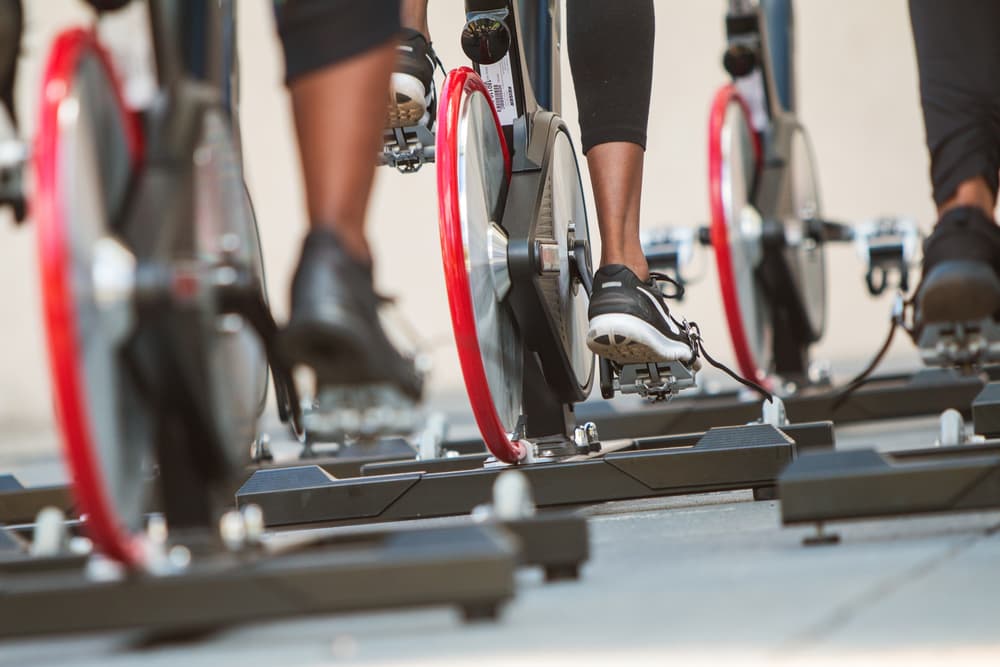Reverse cycling or pedalling backwards is mechanically possible. You can incorporate it into your workout without damaging your bike. Researchers even concluded that doing this has several benefits, like better caloric burn and muscle activation.
Let’s understand this cycling variation further by discussing how it affects the bike and your body.
Is It Safe to Move the Spin Bike Pedal Backward?
You can move the spin bike pedal backwards, but you need two conditions to do this safely. One is your stationary bike should have a flywheel. The other is it should have a tension band or magnetic resistance.
Aside from spin bikes, you can also find both conditions in recumbent and upright bike types.
With these two bike features, pedalling backwards will not cause mechanical problems to your exercise machine. That’s because the bike will smoothly operate even if you pedal in an anti-clockwise direction.
It’s different if your bike has a chain-drive system. Pedalling backwards can put unnecessary stress on the chain, resulting in premature wear. It may cause the chain to break, too.
What are the Benefits of Pedalling Backward?
Now that you know which bike is safe for reverse cycling, the next question is why you should try it. You might think this is a mere exercise variation to spice up your routine.
However, studies show that pedalling backwards has unique benefits, resulting in a more well-rounded cycling workout.
Below are 4 of them.

1. It leads to a higher heart rate.
Boosting the heart rate is one of the goals of exercise that results in caloric burn.
According to the American Council on Exercise (ACE) (2015), backward cycling leads to a higher heart rate than pedalling forward. Specifically, the researchers noted that pedalling in reverse is higher by eight beats per minute.
This increase was also evident among the participants who felt they worked harder during backward cycling. So, trying this out not only adds variety to your workout but also enhances your total caloric burn and aerobic capacity.
2. It improves your balance and coordination.
People with body balance issues often find it hard to work out using cardio machines like a treadmill. One of their best alternatives is the exercise bike since there’s little to no chance of falling or slipping while cycling.
In addition, moving the spin bike pedal backwards can help address their balance problems safely. When you backpedal, you are training your body to move in reverse and against gravity.
Introducing a new exercise to the body, like reverse cycling, can strengthen your weak points, like your hips and legs. In turn, you get better balance and coordination.
3. It strengthens other muscle groups.
Forward cycling primarily works out your glutes and calves. However, some muscle groups only play supportive roles when doing this exercise. One example is your quadriceps.
Does cycling backwards work different muscles? Researchers concluded that the quads are more involved during backward cycling. Reverse pedalling means pulling the pedals up, which requires more energy because most of the load goes to your front thigh muscles.
The glutes and calves are still active during reverse cycling, but this time, they provide support to your quads. Moving the spin bike pedal backwards can help you target muscles that are not as active in traditional forward cycling. See also what muscles get worked on a stationary bike.
4. It lessens the impact on the knees.
Cycling is a low-impact exercise. But it can still be difficult for people suffering from knee pain. It’s because pedalling forward puts all your body weight on the knees. It’s different from reverse cycling. This exercise distributes the weight more evenly. Also, pulling the pedals up lessens the compression on your knees.

How Can I Incorporate Reverse Pedalling into My Workout?
You can do your 30-minute cycling sessions with 15 minutes each of forward and reverse cycling. Alternatively, you can create an interval training program to incorporate backward cycling into your routine. For example, change your pedalling direction every 1 or 2 minutes.
Once you’re used to it, challenge your body and cycle with a higher resistance level. You can also stretch your cycling time if you want. However, before you try moving your spin bike pedal backwards, check and adjust your machine first. Check if the pedals and bike seat height are ready for reverse cycling.
Also, like trying out any new exercise, start slow. Give your body time to adjust to cycling backward before increasing your speed or exercise duration. Lastly, observe proper cycling form throughout. Avoid making unnecessary movements and keep your back straight.
Bottom Line
Exercise variations make workouts fun and more effective. With stationary bikes, you can do this by boosting your resistance level or speed. And now, you can also move your spin bike pedal backwards for more variety. By cycling in both directions, you get double health benefits, too.
Plus, you’ll make the most of your exercise bike at home.
Related Questions
1. Does an exercise bike help with belly fat?
An exercise bike cannot specifically target belly fat. However, as a cardio machine, it can help you lose weight. You also gain more muscles in the process. In turn, your core becomes flatter and more toned. Ideally, pair your cycling routine with a healthy diet for faster weight loss results.
2. Can an exercise bike tone my bum?
The pedalling motion requires you to extend your hips with the help of your glutes or butt muscles. Regular cycling exercise will eventually make your bum less saggy. It helps if you cycle at higher resistance levels. Also, exercise with a spin or upright bike to encourage the leaning posture that works better on the glutes.
- Foldable vs Traditional Reformers: Which One’s Right for You? - 2 July 2025
- Elliptical Cross Trainer vs Exercise Bike: Which is Better? - 24 June 2025
- How Do the Different Massage Gun Attachments Work? - 23 June 2025
